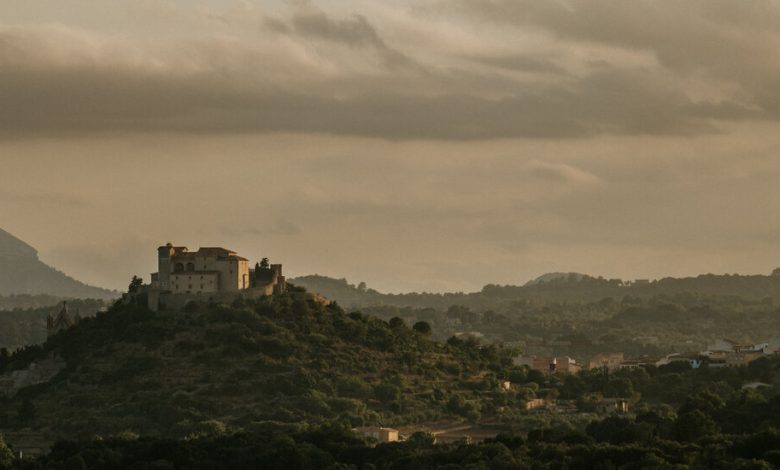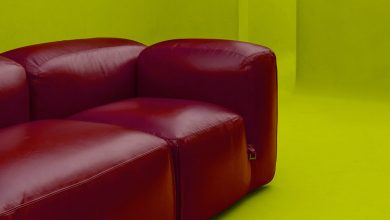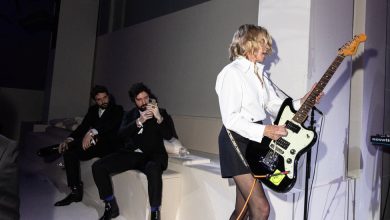A Local’s Guide to Majorca

T’s new monthly travel series, Flocking To, highlights places you might already have on your wish list, sharing tips from frequent visitors and locals alike. Sign up here to find us in your inbox once a month, as well as our weekly T List newsletter. And you can always reach us at [email protected].
Majorca, the largest of Spain’s Balearic Islands, has been a classic summer destination for Europeans and Brits for decades. But long before the big resorts sprung up along the coastline and villas came with helipads, the island’s hilltop villages attracted artists, musicians and writers in search of year-round sun and solitude. Among the best known of those early visitors were the Polish composer Frédéric Chopin and the French novelist George Sand, who spent the winter of 1838 in the town of Valldemossa, in the mountains above Majorca’s northwest coast. By 1929, when the British writer Robert Graves and the American poet Laura Riding arrived in the nearby village of Deià — at the recommendation of the American writer Gertrude Stein — and later built a home there, that picturesque hamlet of stone houses and olive groves was already a fledgling artists’ colony. In 1956, the Barcelona-born artist Joan Miró and his family moved to the outskirts of Palma. Plenty of artistic talent was homegrown, too, nurtured by generations of weavers, glassblowers and ceramists. One of Spain’s most prominent contemporary artists, Miquel Barceló, grew up on the island painting landscapes with his mother and her friends. Among the island’s many signature local crafts is the roba de llengües, or cloth of tongues, a style of ikat believed to have arrived from Asia centuries ago via the Silk Road. And it’s that deeply rooted artistic tradition combined with an extraordinary natural beauty that’s attracting the latest influx of creative types. In the last few years, a number of artists and designers have left larger cities in Europe and moved to Majorca. Some of these new arrivals are renovating old houses and farms in and around the country towns of Sóller and Deià or choosing to base themselves in Palma’s Old Town, where Gothic spires loom over the port, and there’s a fresh wave of contemporary art galleries and idiosyncratic shops dedicated to supporting local artisans. All over the island, new or newly revived hotels compete for the most impressive views.
For the first installment of our series of Flocking To travel guides, we asked four locals or frequent visitors to Majorca to share the places they love most. One word of advice for first-time visitors: Majorca sprawls across roughly 1,400 square miles (it’s about the size of Long Island), so if you’re planning on exploring, you might want to rent a car.

The Insiders
Stefania Borras,the designer and founder of the fashion line Datura and a native Majorcan, opened the Datura Studio Isla boutique in Deià, Majorca, in 2022.
Dalad Kambhu,originally from Bangkok, is the chef and co-owner of Kindee, a Michelin-starred Thai restaurant in Berlin. Since the year 2020, Kambhu has been spending several months a year on Majorca with her husband, the architectural designer Geoffrey Grunfeld.
Adriana Meunié, the textile artist, is a native Majorcan who moved back to the island in 2014 after working in Barcelona and Berlin.
Matthew Williamson,the fashion designer turned interior designer, moved from London to Majorca in 2016. His first home décor book, “Living Bright,” comes out in October.
Sleep
“I was incredibly impressed with the newly reinvented Grand Hotel Son Net [about eight miles west of Palma] when I went to visit the other day. It’s a very special place: old-school but fresh and contemporary, and jasmine as far as the eye could see. It has all the bells and whistles but doesn’t feel too stuffy. I also recently found an especially cute little place in Palma called Palma Riad. It’s Moroccan inspired — there is in fact a lot of Islamic influence on Majorca because it was under Muslim rule for centuries — and feels very new for Palma. I would also go there for pre-dinner drinks.” (Rooms at Grand Hotel Son Net from about $650 a night; rooms at Palma Riad from about $600 a night) — Matthew Williamson
“For me, Antoni Esteva, the co-owner and architect of Es Racó d’Artà [in the island’s northeast], is a poet. I think he really understands space, light, materials and the beauty of simplicity so profoundly. All of his projects, from the gallery Sa Pleta Freda in Son Servera to the hotel Son Gener, are created with such a strong vision that connects the past with the future.” (Rooms from about $520 a night) — Adriana Meunié
“I am so excited about the new Hotel Corazón [in the northwest]. It was just opened by two friends of mine, the artists Kate Bellm and Edgar Lopez. One of my favorite chefs on the island, Grace Berrow, is cooking there.” (Rooms from about $380 a night) — Stefania Borras
Eat and Drink
“Maria Solivellas, the chef and owner of Ca na Toneta, in the rural village of Caimari, cooks traditional Majorcan food [seasonal options include coca, a flatbread topped with fresh roasted peppers or arroz brut, a savory rice casserole] but her own way, and [often] with vegetables she grows herself. Be sure to check out her shop where you can find locally made ceramics.” — A.M.
“The food at Sa Foradada is good — go for the paella — but the views of the sea and the cliffs are insane. It’s only accessible by boat or by a hike of almost an hour, and it’s essential to book in advance — tables are limited. When it comes to fish, Casa Manolo [in the southern village of Ses Salines] is one of my favorites on the island. I used to go there as a kid with my dad who always loved eating well. It’s a very traditional place not far from amazing beaches. For drinks in the evening, I love Bar La Sang in Palma. This homey natural wine bar is kind of the place to be at the moment because the island’s natural wine scene is getting really interesting. You can order small, delicious bites, and there are often different visiting chefs cooking here.” — S.B.
“Cati Ribot is a female winemaker based in the island’s northeast, in Santa Margalida. She’s doing beautiful natural wines made from indigenous grapes [such as prensal blanc and escursac]. Her natural wine tastings are on Saturdays only and you must email for appointments. I also love Ses Coves, a rustic restaurant in the north of the island at the foot of Puig de Sant Miquel, which specializes in Spanish meat and fish cooked over fire. Especially delicious are the grilled sweetbreads. Everything was so good; I was sucking on the bones. Afterward, I recommend going to the nearby caves that have the most incredible stalagmite and stalactite formations.” — Dalad Kambhu
Shop
“Inside Villa Rullan, in Deià, are a very charming bistro and a boutique. The shop, named Joy, sells a great mix of locally and sustainably made crafts, from baskets and bags handwoven with palm leaves or grass to whimsical hand-painted ceramic mugs.” — M.W.
“La Pecera is a great design store in Palma founded by Marlene Albaladejo, who’s an important sustainable design pioneer on the island. Look for chairs made partly with woven local bulrush grass and woven palm leaf pendant lamps.” — A.M.
“The fashion designer Rosa Esteva [of the Cortana brand and boutiques] is the definition of a Majorcan woman: so elegant, sophisticated and proud of her land and identity. Her new shop in Palma is stunning. It’s a maze of white rooms that feature her clothes: beautiful, practical and made from natural materials. She makes clothes for women who are active and the colors she uses perfectly reflect the hues of the island. Earth Core is a new gallery and boutique in the town of Sóller. It was opened by transplants from Berlin: Karin [Oender] and David [Mallon], the founders of Souvenir Official, a very cool T-shirt and hoodie brand. I appreciate it because it’s essentially a love letter to the island and pays tribute to local artisans, produce and plants. They serve up great fruit juices and use local plant dyes for their T-shirts, wraps and fabric bags.” — D.K.
Explore
“Cala Figuera is a charming fishing village in the southeast of the island that looks like Ibiza with its whitewashed buildings that descend into the bay.” — M.W.
“Valldemossa Sunday Market is the best spot to buy local delicacies like dried figs and peaches, honey, cheeses and charcuterie. Look for Joan and his tiny stall called Can Bernat. He is such a funny character and will make you try everything.” — S.B.
“The new La Bibi Gallery is adding some energy to the contemporary art scene in Palma, hosting progressive shows and also international artists through its residency program. Xtant is an excellent new textile and craft fair that takes place in May. It brings textile artisans here from around the world and offers lectures and events that are open to the public.” — A.M




